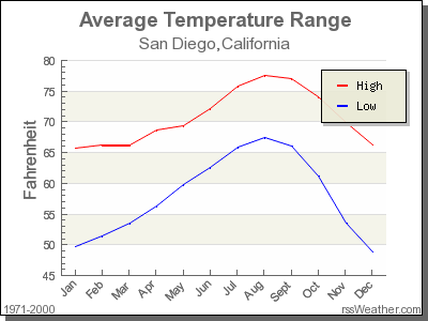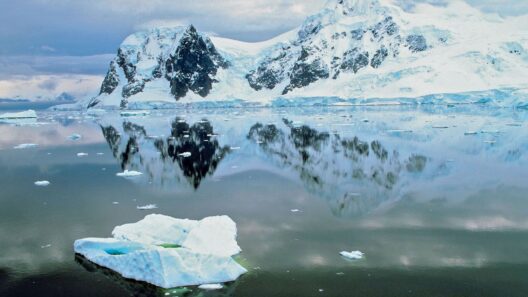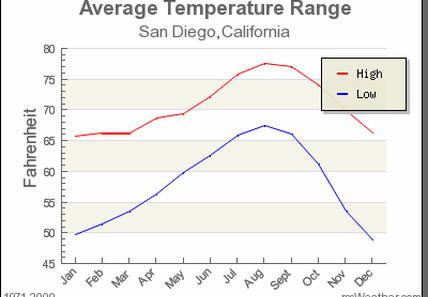Canada, a vast and diverse nation, is often synonymous with snow-capped mountains, frigid temperatures, and icy wildernesses. While these images certainly represent a facet of the Canadian climate, they are merely the tip of the iceberg. To truly appreciate Canada’s climate, one must delve into a tapestry woven with rich climatic variations, regional peculiarities, and the profound impacts of climate change.
The climate of Canada can be broadly categorized into several distinct climatic regions, each with its own unique characteristics. From the arctic tundra to temperate forests, the geographical expanse of Canada facilitates a plethora of weather patterns. The struggle against environmental degradation, moderated by climate fluctuations, shapes not only the landscape but also the Canadian way of life.
Canada’s northernmost territories experience an Arctic climate, where the chill never really departs during winter months. Temperatures can plummet to sub-zero extremes, and the landscape becomes a mere canvas of white. However, even this extreme climate captivates curiosity with phenomena like the northern lights—an awe-inspiring display of natural beauty. Yet, this zone is witnessing transformative changes, such as the melting of permafrost, resulting in unique ecological challenges. The thick layer of ice that has historically insulated the underlying soil begins to thaw, releasing stored greenhouse gases into the atmosphere and accelerating climate change.
Venturing south, one encounters the Subarctic regions, where dark winters yield to temperate summers. Here, the transition from snow-laden landscapes into patches of verdant flora illustrates the adaptability of life. Species such as the caribou have developed migration patterns finely tuned to these seasonal shifts. Yet, disruptions caused by rising temperatures threaten these long-established cycles, compelling organisms to adjust, often perilously. The degradation of habitats due to climate change jeopardizes species survival and calls for urgent action.
As one moves further south, the Boreal Forest belt emerges, enveloping much of Canada. This extensive forested region plays a critical role in the global climate system. Stretching from the west coast to the eastern provinces, the Boreal Forest serves as a carbon sink, absorbing greenhouse gases. The trees here form a vital ecosystem that supports bountiful wildlife and diverse flora. However, the impending threat from deforestation and increased forest fires, exacerbated by climate change, challenges the sustainability of this crucial ecological bastion.
The Great Lakes and surrounding regions experience a humid continental climate that offers a quite distinct experience. Here, the summer months bring warmth and humidity, while winters are steeped in abundant snowfall—ideal for those winter sports enthusiasts. Yet, this area, once a picture of predictable weather patterns, is experiencing erratic shifts. The increased incidence of extreme weather events raises flags about the underlying climatic alterations taking place. Studies reveal that precipitation patterns become more volatile, with intense rainfalls sometimes succumbing to lengthy droughts.
British Columbia presents another fascinating climatic profile, exhibiting an oceanic climate along its coast. The region’s proximity to the Pacific Ocean bestows upon it a milder winter, albeit with incessant rainfall. The temperate rainforest is home to towering conifers and is a habitat richness that contrasts sharply with the arctic terrains of the north. However, changes in ocean currents and temperatures influence the moisture-laden winds, leading to phenomena such as changing salmon migration routes and the catastrophic effects of wildfires in the drier interior.
Transitioning towards the Prairie provinces, one finds a landscape predominantly marked by grasslands and a distinctly continental climate, characterized by hot summers and harsh winters. The Prairies are a breadbasket for the nation, raising concerns about the impact of climate shifts on agricultural yields. As climate change intensifies droughts, farmers face increasingly uncertain futures. The dependence on irrigation and changes in crop varieties may offer solutions, but they also bring additional challenges for soil health and food security.
Quebec and Atlantic Canada’s maritime climate demonstrates yet another layer of complexity to Canada’s climate story. Here, mild and snowy winters give way to humid summers, creating an environment ripe for diverse agricultural outputs. Coastal ecosystems become vulnerable to sea-level rise, disrupting both human and wildlife communities. Moreover, the region’s unique weather patterns are being redefined by climate change, culminating in shifts like increased hurricane activity, which spell challenging realities for local communities.
Ultimately, Canada’s average climate is an intricate mosaic, painting a picture of both beauty and vulnerability. Every region brings forth a plethora of climatic experiences—each encapsulating unique ecosystems and cultures that are, in turn, affected by the unpredictable nature of climate change. The foreboding consequences, from rising sea levels to intensified floods and fluctuating temperatures, underscore the necessity for immediate and collaborative action.
Thus, the advocacy for environmental stewardship becomes paramount. Canada’s climate narrative is not just a tale of snow and ice; it illuminates the complexity of ecological interdependence. Embracing innovative solutions and steadfast commitment to sustainable practices will not only protect the nation’s climate diversity but also contribute to the global effort against climate change. The time for examination, awareness, and change is now. Canada’s average climate is more than a statistic; it is a profound call to action for all who inhabit this vast land.







